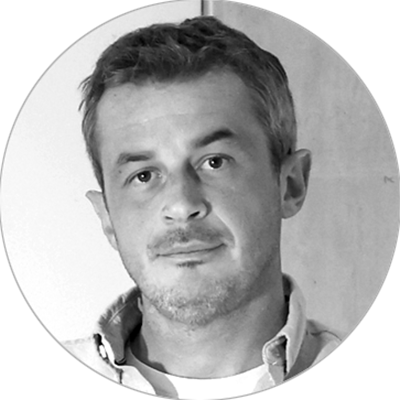
Jérémy Griffon, architect, TRACKS agency
In 2024, the TRACKS agency decided to respond to a call for tenders to create a museum on the subject of war captivity. A behind-the-scenes look at the work of the winning team.
What were your motivations? How did you work on this project? Did the preparation involve any particular approach?
Our architectural approach places greater emphasis on the narrative and contextual aspects of the project than on style. Through the museum project, we have been given the opportunity to build a narrative on a theme that has been too little addressed until now, namely wartime captivity. This equivocal subject offers us the opportunity to create a new place of memory and reflection in an exceptional site at the entrance to the village of Ravenoville.
As a first approach, we put together a team of specialists to create a tailor-made design team. A continuous, iterative process was put in place, with weekly workshops to consolidate our respective ideas. An in-depth reading of the program, our feelings about it at the time of the competition and then on several occasions, and our personal research feed discussions that gradually translate onto paper, finally transforming into a sketch behind which everyone can identify.
Building a museum is a real challenge, both architecturally and scenographically: how do you see form and content as “one” in this project? What message is the architecture trying to convey with such a serious theme?
The future project, located in the immediate vicinity of the former camp, has the responsibility of dialoguing spatially and historically with this site of memory. The writing of our project therefore lies partly in finding a harmonious balance between several approaches:
A memorial approach, with subtle, symbolic architecture evoking the barracks
A cultural approach, suggesting an identifiable, iconic and monolithic project based on a choice of bio-sourced materials
A vernacular approach, highlighting the relationship with the natural environment and local heritage.
The challenge of the Foucarville Museum of Captivity is a complex one, requiring us to find the nuance needed to bring memory back to life beyond historical taboos. The project is based on the contexts of the erasure of memory and the interest of its reactivation, in order to provide an embodied, scientific and educational look at the history of the vanquished. Architecture, in its singular capacity to evoke past histories and memories, has a profound emotional power. The aim of this dialogue is not to reconstitute what has been lost, but to explore its echoes: not to recreate, but rather to suggest.
From an architectural point of view, you have opted for an ecological approach, in line with your theme of “the economy of the few”: what discussions were involved in your choices? What other options had you initially considered?
Today’s climate challenges require us to place the act of building within a dynamic process, in which the life of a building begins long before the keys are handed over. The best energy is the energy we don’t consume. Indeed, we believe it’s essential to take into account the impact of architectural choices on the overall ecological footprint of a project from the outset. This means taking a holistic approach to the materials we use: where they come from, how they’re made, how they’re used, and whether they can be reused. From the earliest stages of design, we favored a sober, reusable approach that echoes the construction of the old camps. It seemed only natural to use a frugal approach to the project as an essential component in the creation of this new museum on the captivity of war.
